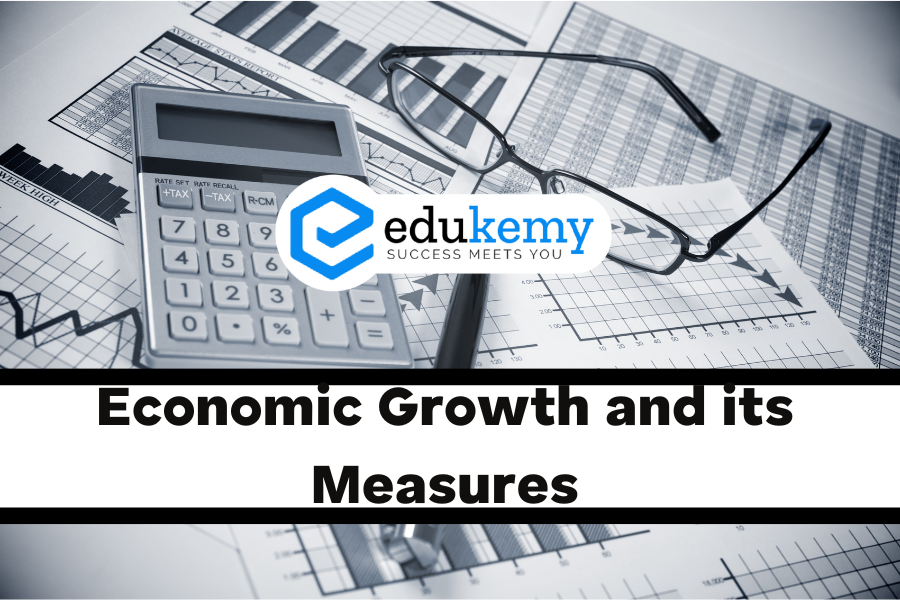
Economic growth is a vital component of a nation’s economic progress. It brings about various benefits, including job creation, income augmentation, and an improved standard of living. This growth also results in increased government revenues through taxes, which can be channeled into capital formation and welfare programs. However, it’s essential to acknowledge that economic growth can also have negative side effects, such as inequality and environmental degradation. Gross Domestic Product (GDP) serves as a crucial metric in assessing a country’s economic growth.
Gross Domestic Product (GDP): GDP is a fundamental measure of a nation’s economic performance. It represents the total market value of all final goods and services produced within a country’s borders over a specific period, typically a year or a quarter. GDP provides a comprehensive snapshot of the overall economic activity within a nation.
Types of GDP:
- Nominal GDP: This measures the total value of goods and services produced in a country at current market prices without adjusting for inflation or deflation. It does not reflect changes in the purchasing power of a currency.
- Real GDP: Real GDP accounts for inflation or deflation by calculating the value of goods and services based on a constant set of prices from a specific base year. This provides a more accurate representation of economic growth over time.
Components of GDP: GDP is composed of various components, each representing a different aspect of economic activity:
- Consumption (C): This includes expenditures made by households on goods and services, such as food, housing, and leisure activities.
- Investment (I): Investment encompasses spending on capital goods like machinery, equipment, and structures, as well as residential construction.
- Government Spending (G): This refers to government expenditures on goods and services, including defense, infrastructure, and public services.
- Net Exports (Exports – Imports): Net exports represent the value of a country’s exports minus its imports. It indicates the contribution of trade to the overall economy.
GDP Growth Rate: The GDP growth rate measures the percentage change in GDP from one period to another. It is a key indicator of a nation’s economic performance and is used to assess the pace of economic expansion or contraction.
Limitations of GDP: While GDP is a valuable economic indicator, it has its limitations. It does not account for income distribution, quality of life, or non-market activities like household work. Additionally, it does not consider the depletion of natural resources or environmental degradation.
Conclusion: Economic growth, as measured by GDP, plays a crucial role in shaping a nation’s prosperity. It generates wealth, creates employment opportunities, and supports government initiatives. However, it is essential to supplement GDP with other indicators to gain a comprehensive understanding of a country’s overall economic well-being.
FAQs
Q: What is economic growth?
A: Economic growth refers to the increase in a country’s production of goods and services over time. It’s typically measured by the rise in Gross Domestic Product (GDP), which reflects the total value of all goods and services produced within a country’s borders.
Q: What are the main factors influencing economic growth?
A: Economic growth is influenced by various factors including investment in physical and human capital, technological progress, government policies, infrastructure development, access to resources, and global economic conditions. These factors contribute to increased productivity and efficiency, leading to higher levels of output and economic growth.
Q: Why is economic growth important?
A: Economic growth is crucial for improving living standards, reducing poverty, and creating employment opportunities. It allows for increased consumption and investment, leading to higher incomes and better standards of living for individuals. Additionally, sustained economic growth provides governments with more resources to invest in public services such as healthcare, education, and infrastructure.
Q: How is economic growth measured?
A: Economic growth is typically measured using indicators such as Gross Domestic Product (GDP), Gross National Product (GNP), or Gross National Income (GNI). These measures quantify the total value of goods and services produced within a country’s borders (GDP), by its citizens (GNP), or by residents and businesses (GNI), respectively. Other indicators such as per capita GDP or GDP growth rate are also used to assess economic growth relative to population size or over time.
Q: What are the limitations of using GDP as a measure of economic growth?
A: While GDP is a widely used measure of economic growth, it has several limitations. It does not account for income distribution, environmental degradation, informal economy activities, or non-market transactions such as household work. Additionally, GDP does not reflect changes in the quality of goods and services, and it may not capture the overall well-being or happiness of a population. As a result, economists often use alternative measures such as the Human Development Index (HDI) or Genuine Progress Indicator (GPI) to provide a more comprehensive assessment of economic progress.
In case you still have your doubts, contact us on 9811333901.
For UPSC Prelims Resources, Click here
For Daily Updates and Study Material:
Join our Telegram Channel – Edukemy for IAS
- 1. Learn through Videos – here
- 2. Be Exam Ready by Practicing Daily MCQs – here
- 3. Daily Newsletter – Get all your Current Affairs Covered – here
- 4. Mains Answer Writing Practice – here

